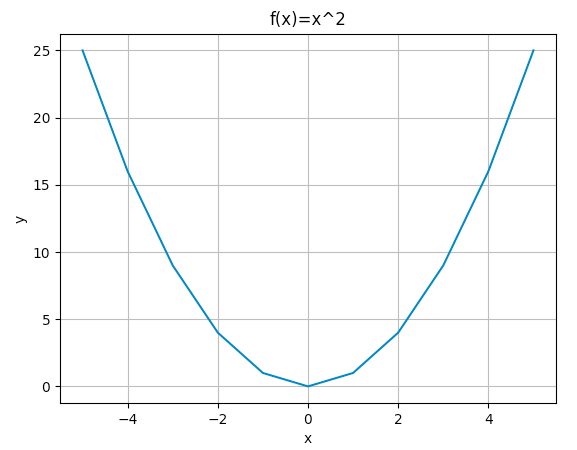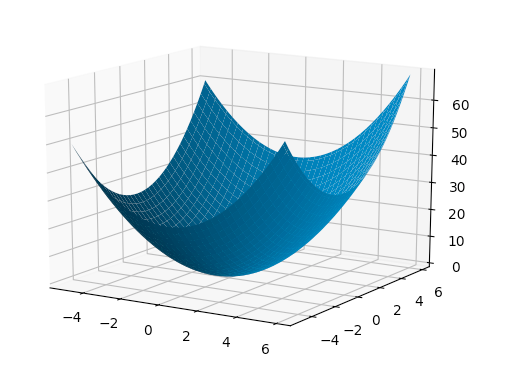Derivatives allow us to know how things change. For example, in what direction a straight line or a curve is moving. The derivative; or rate of change, of a straight line is its slope which is described by the change in y over the change in x of 2 points that lie on that straight line. In case of a curve, we can have more than 1 slope because a curve is able to have several changes occuring within it.
In machine learning, gradient descent; which is the optimisation algorithm used in neural networks, is able to find the minimum of a function where there is the least amount of loss. The local minimum or local maximum for a function is where the derivative of the function equals zero. And this is because the tangent line to the curve at these points is parallel to the coordinate axis giving a rate of change of null.
Usually there exists packages that implement ML algorithms with the gradient descent and differentiation built-in. This article is meant to focus on the concept of differentiation for univariate and multivariate functions.
Univariate Functions
Let's consider the following function: $$y = x^2$$
To see what this function looks like, we can simply pick a bunch of x values and compute their corresponding y values and then plot the result. Here is what it looks like in Python.
from matplotlib import pyplot as plt
x_vec = range(-5,6)
## defining my function
def fn(x):
return x ** 2
y_vec = list(map(fn, x_vec))
plt.title("plotting f(x)=x^2")
plt.xlabel("x")
plt.ylabel("y")
plt.grid(True)
plt.plot(x_vec, y_vec)
plt.show()

We now want to calculate the formula for the derivative of the function above.
Since we know that the derivative of a straight line is the slope, the derivative of a curve is equivalent to the slope of the tangent line to that curve where the 2 points defining the tangent line are infinitely close.
Let's define the 2 points P and Q on the curve. If we move P and Q closer to each other, the slope of the curve eventually becomes almost equivalent to the slope of the tangent.
If the distance between P and Q is h:
$$P(x,\ y)$$ $$Q(x + h,\ y)$$
where h is a very small value. Then:
$$P(x,\ f(x))$$ $$Q(x + h,\ f(x + h))$$
If we try to calculate the slope from the points above:
$$slope = \frac{\delta y}{\delta x}$$ $$= \frac{f(x+h) - f(x)}{x+h-x}$$ $$\ $$ $$= \frac{(x+h)^2 - (x)^2}{h}$$ $$\ $$ $$= \frac{x^2 + h^2 + 2xh - x^2}{h}= 2x+h$$
Now as h approaches zero i.e. the distance between P and Q becomes very very very small,
$$ slope\ of\ PQ\ ==\ slope\ of\ tangent\ to\ curve$$ $$slope_{h\to 0} = 2x + (0) = 2x$$ $$\lim_{h\to 0} \frac{\partial x^2}{\partial x} = 2x$$
Multivariate Functions
A multivariate function is described by having more than 1 variable. For example:
$$f(x, y) = x^2 + y^2$$
Unlike a univariaite function, the derivative of a multivariate function is a vector called the gradient.
The partial derivatives are obtained when you take turns calculating the derivative of a function w.r.t. 1 variable at a time while holding the other variables constant.
I will first plot the function in Python:
from numpy import arange from pylab import meshgrid from mpl_toolkits.mplot3d import Axes3D import matplotlib.pyplot as plt ## defining my function def func(x,y): return (y**2) + (x**2) x = arange(-5,6,0.1) y = arange(-5,6,0.1) X,Y = meshgrid(x, y) Z = func(X, Y) fig = plt.figure() ax = fig.gca(projection='3d') surf = ax.plot_surface(X, Y, Z) plt.show()

1) Differentiate by the first variable:
$$f(x, y) = x^2 + y^2$$
$$let:\ \ \ \ b = y^2$$
$$then:\ \ \ \ f(x, y) = x^2 + b$$
$$\frac{\partial f(x, y)}{\partial x} = \lim_{h\to 0} \frac{f(x+h) - f(x)}{h}$$
$$\ $$
$$= \lim_{h\to 0} \frac{(x+h)^2 + b - (x^2 + b)}{h}$$
$$\ $$
$$= \lim_{h\to 0} \frac{x^2 + 2xh + h^2 + b - x^2 - b}{h}$$
$$\lim_{h\to 0} = 2x + h = 2x$$
$$\therefore\ \frac{\partial f(x, z)}{\partial x} = \lim_{h\to 0} 2x + h = 2x$$
2) Differentiate by the second variable:
We follow the same steps as above but for the y variable:
$$\frac{\partial f(x, y)}{\partial y} = 2y$$
Therefore the partial derivative vector of f(x, y) is:
$$\nabla f(x, y) = \begin{bmatrix} \frac{\partial f(x, y)}{\partial x} \\ \frac{\partial f(x, y)}{\partial y} \\ \end{bmatrix} = \begin{bmatrix} 2x \\ 2y \\ \end{bmatrix} $$